Continuing the ongoing series of interviews with creative artists working on various aspects of movie and TV productions, it is my pleasure to welcome Andy Strahorn. In this interview he talks about his work in film and episodic television, the transition of the industry from film to digital, the rising expectations in the world of episodic productions, and the impact felt all across the industry since Covid started. Around these topics and more, Andy dives deep into his work on the first two seasons of “9-1-1: Lone Star”.
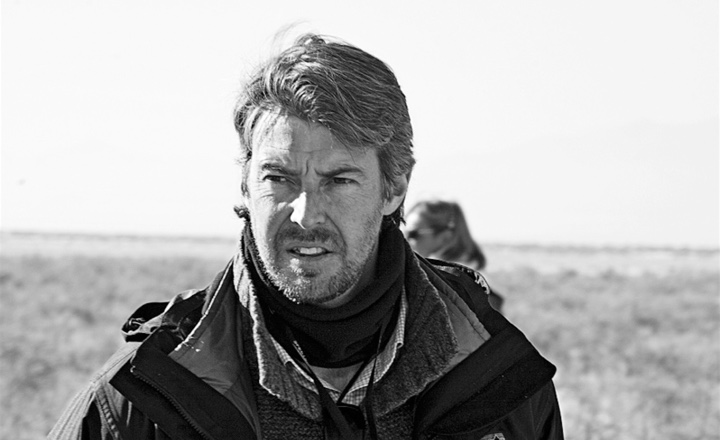
Kirill: Please tell us about yourself and the path that took you to where you are today.
Andy: My name is Andy Strahorn, and I’m the director of photography on “9-1-1: Lone Star”. I grew up in a small town in Australia. Out local movie theater had a single screen, and it showed movies three times a week. I remember seeing “The Empire Strikes Back” when I was eight years old, and that’s how it started for me. After I saw it, I knew what I wanted to do. I didn’t know exactly how to articulate that, but I knew that I wanted to do something with images.
Fast forward to high school, my first job in the film industry was as a cleaner to that cinema that I saw “Empire” 12 years earlier. In some weird way, in that small universe back in the country town in Australia, I’d come full circle to taking my first step into the film industry – even though I started as a cleaner, and then worked my way up to projectionist and what not. Then I moved town to Brisbane, worked my way from production assistant into the studio system at Warner Bros into camera. It took close to a decade to do that.
Every weekend, any chance I got, I would be shooting film. Those were short films and some ideas. The culture of where I come from, growing up in the country, has that element of learning on the job. That’s how I learned to do what I do. It was learning on the job through repetition. I was lucky enough to be given the opportunity to shoot short films, and then independent features. A movie I did back in 2001 called “Undead” got a release in the United States, and several years afterwards I moved over here [US] and started this part of my journey.
One thing I find interesting about any technician, any head of department, or any creative is that there’s literally not one linear way of getting into the film industry. Every single person has an interesting story of how they found themselves in the film industry and where they are today. You can have passion, and drive, and all the rest of it, but you’re really talking about a career that is so fluid. It’s not like you do this 4-year degree, and then get the job, and that’s the way it happens. It’s too fluid. It vacillates too much.
My scenario is probably more common than not, but maybe not so much. It’s whatever you can do to get where you want to go. I think the backbone of that is keeping at it. It’s perseverance and working hard. I’m very grateful that my home country taught me that. The industry in Australia is a lot smaller, so your diligence and your commitment – as well as your talent – are constantly under the microscope, so to speak. There just wasn’t enough jobs, so if you weren’t efficient or skilled, you just wouldn’t get the call. I was fortunate to learn under those circumstances and to have that at the beginning stages of my career. There’s a lot of opportunity in the United States, and that puts you in a good position to seize that opportunity and to make steps forward.
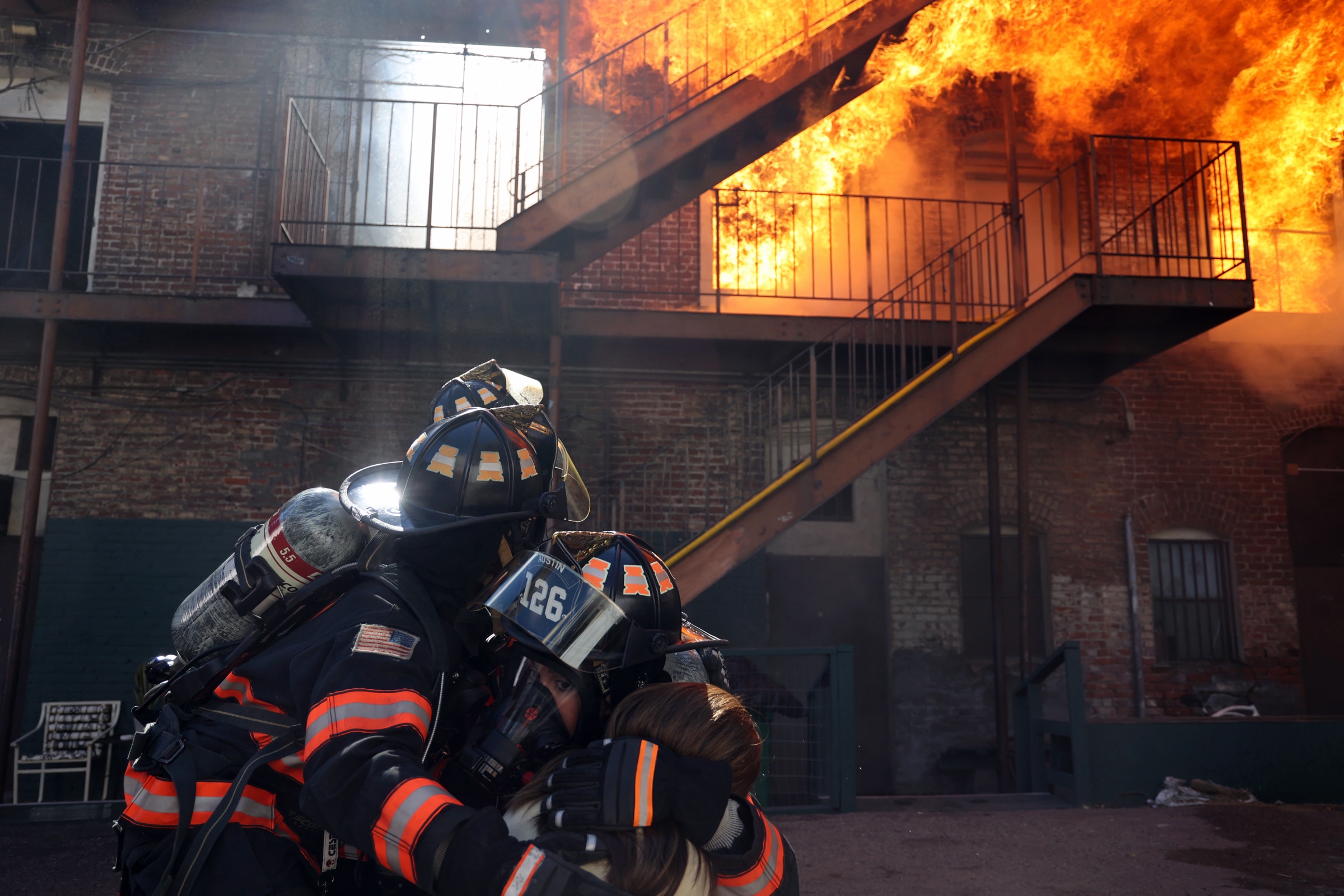
Cinematography of “9-1-1: Lone Star” by Andy Strahorn. Courtesy of Fox Media.
Kirill: How has the transition of the industry from film to digital been for you?
Andy: It’s been an interesting time. I love film and I’m a total traditionalist in that sense. But what I’ve come to enjoy about digital in the last 10 years is the ability and the immediacy to creatively make lighting and color choices right there and then. When we did film, you would shoot, then you’d wait for the lab to process overnight, and then you might see something the following afternoon if you were lucky. What this does is it takes a lot of the guessing game out. You now have the immediacy of doing whatever you want right there and then with DIT.
I relish that. I can be in the moment creatively. I can make those choices in color, contrast or texture right there and then as I’m seeing it. You go down the pipeline with the studio, the producers, and the production company, and they can see the intention – rather than an interpretation – of the image right there and then. We work in so many situations and scenarios in present day. Cinematographers might be shooting in a different city with a different crew or a different post production facility. You might not have that shorthand that you ordinarily have in your hometown, as you’re trying to find that visual language in that new relationship.
The great thing about digital is the immediacy. I’m standing right there and then, I can put a bit more of this or take out a bit more of that. There is a control factor that we all want as cinematographers as it goes through the pipeline. We want the control the intent of the image. That’s the power of digital for me.
Film is obviously beautiful, but you need to see where we are and where the industry is heading. Digital is here to stay. It is a backbone now for most studios. We are playing by different rules, but it’s good to know that we can still shape the way we see the world. We want to protect the integrity of the vision as it goes through the system. That is what is important, be it film or digital. It’s all about that vision getting to the end result that you want, and trying to protect it as much so there’s less need for interpretation of the intention. It allows you to be true to yourself and have it the way you want to, rather than there being manipulation along the way.
Kirill: Is it difficult for you to talk about what you do for a living with people outside of your industry?
Andy: It’s just hard to quantify what is a director of photography or a cinematographer. It’s that person that helps a director, a writer, and a producer, that brings whatever the subject and the script is to life with regard to the power of a camera, and what does a camera say and do.
Sometimes I put it as simply as using blue to feel the sensation of a winter cold, and using yellow, orange or red to feel the sensation of a summer warmth. Then I talk about capturing that, putting the camera and the color and the contrast, manipulating all that and trying to get everyone’s vision through the tip of the spear which is the frame that I see. It doesn’t matter what happens around that frame. No matter what happens on the set around that frame, everyone only cares about what you see in the end product.
The cinematographer is the person that makes you feel, that invokes that emotion that you feel even when you turn off the sound. You turn off the sound, you look at the image and you feel sad for that person. Why is that? It’s the lens choice, the lighting, the texture, the way the camera moves that makes people feel a certain way. That’s what I tell people when they ask me this question. I choose lenses, lighting and contrast to invoke an emotion, to make people feel a certain way when they see an image in a scene in a movie. If you do your job right, people will feel it on a subliminal level.v
It’s not always the easiest question to answer. It’s complex. Cinematography is a weird combination of art and science, and you’re also dealing with money. Art in itself is the antithesis of money. Art is raw. It’s primal and instinctual. You can’t put a dollar price on that, but that’s the game we play.
You have 45 minutes for this lighting setup, and it’s in a room that had a certain scene in it that we shot last night. The scene needs to be moody, and the room has a certain physical size to it. How do you create the illusion of mood, drama and tension in a room of that size, with characters moving all over it? How do you shoot them in a truthful photographic way, but also flattering at the same time? That in itself becomes a logistical, technical scenario.
Shoots in the film industry are getting faster and faster than they were 10 years ago. You’re moving at such a speed, and you ask yourself how do you artistically get to put your stamp on that with all the other noise around you? We need to hit certain times, we need to keep moving, we need coverage. Look at films from 20-30 years ago, be it series of features, and you compare them to what we’re seeing today, we have more shots and setups. The expectation of the images is increasingly higher. We need more today than what we did back when I started in ’95.
You have these expectations and the needs from the production company and the studio, and you have to balance it with the artistic expression. How do I say something here with the image, knowing that I have to appease and do what I need to do over here for this production company, the studio, the director, the producers and the actors? It’s a juggling act between being truthful as an artist and working within the studio system.
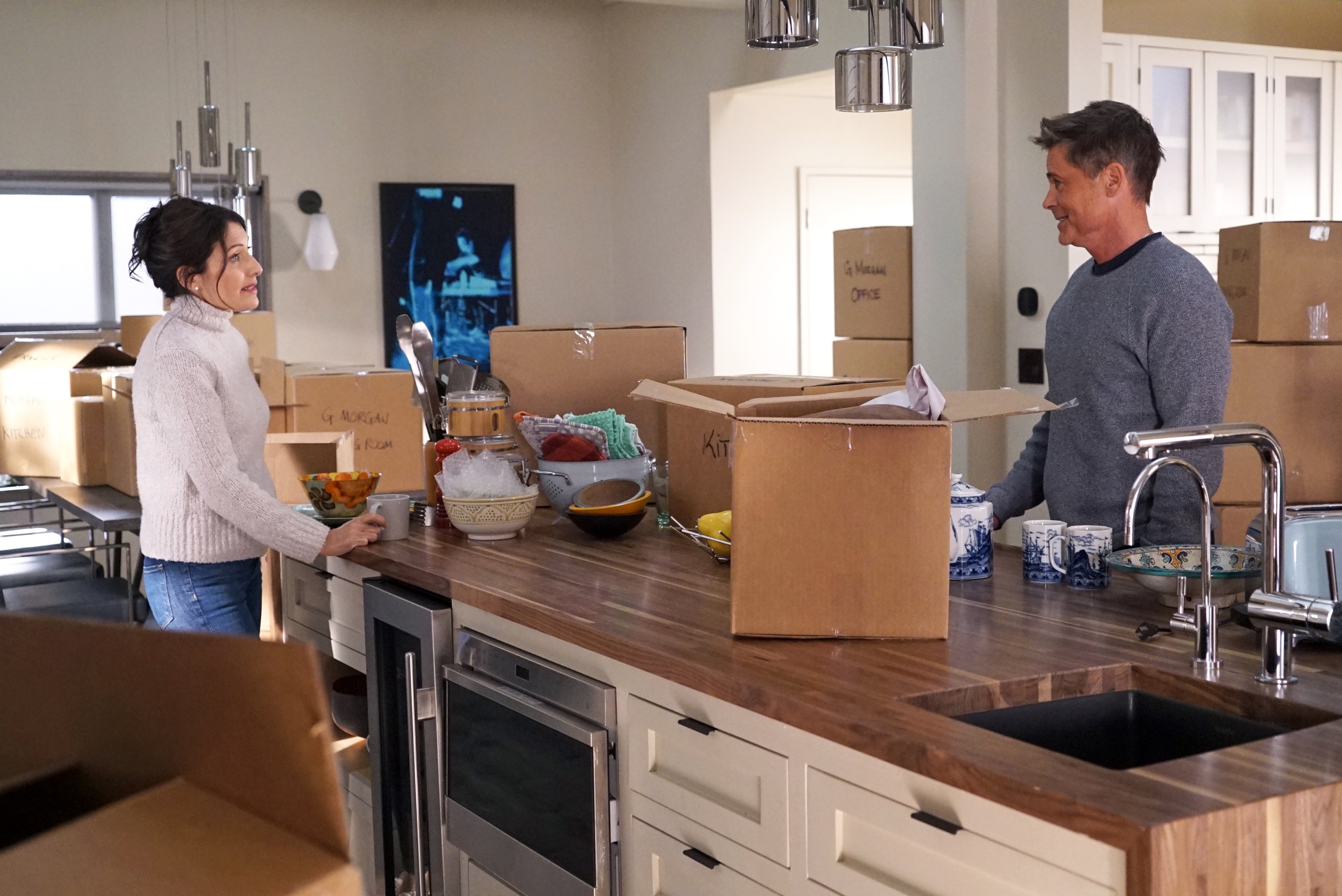
Cinematography of “9-1-1: Lone Star” by Andy Strahorn. Courtesy of Fox Media.
Continue reading »
Continuing the ongoing series of interviews with creative artists working on various aspects of movie and TV productions, it is my pleasure to welcome Neil Patel. In this interview he talks about his work in theater, film and episodic television, evolution of tools at his disposal, changes in the world of episodic productions in the recent years with the rise of streaming services, and the impact felt all across the industry since Covid started. Around these topics and more, Neil dives deep into his work on the second season of “Dickinson”.
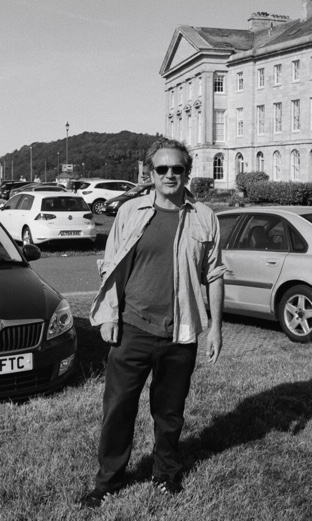 Kirill: Please tell us about yourself and the path that took you to where you are today.
Kirill: Please tell us about yourself and the path that took you to where you are today.
Neil: My name is Neil Patel, and I’m a production designer. I’m currently working on season 3 of “Dickinson”, and I also did season 2 which has just been released.
My path to this job started when I was in school. I was interested in art and architecture, and I loved film – but I never thought of working in film. I pursued a degree in architecture, and at college I connected socially with people who were doing films and theater. I was a visual artist and an architect, and they asked me to design sets which was my introduction to the whole idea of being the visual person that tells stories and makes plays.
I began doing that and I found that I really liked everything about it. I liked the process. I loved collaborating with people. I loved taking my skill and my interest in the visual world, architecture and art, and translating it into helping to tell story. It was also much more immediate. Architecture is a process. You work for years before you see the thing that you’ve been working on. But in theater and film, depending on the size of the project, you might see the result of your work quite soon. And I also loved collaborating with directors, actors and other designers.
My studies were around Italian architecture and art, and I lived in Italy for two years, working on operas and theater plays in Italy and Austria. That laid the foundation for me to pursue it professionally. Afterwards I came back to US and did MFA [Master of Fine Arts] in scenic design at UCSD. My first professional job was at the La Jolla Playhouse in California, which led me to other regional theater and opera productions, and that led me to film.
I worked with several playwrights in the theater who helped me in my transition to production design in film and television and I still find that so many writers I work with started in the theater like Alena Smith who is the creator of “Dickinson” – she went to Yale School of Drama as a playwright and then she became a television show creator. Early in my career I worked with a writer named Warren Leight. I designed his play Side Man on Broadway that starred Edie Falco just as she was starting on “Sopranos”. Warren became the show runner for “In Treatment” for HBO. He decided he wanted me to design it because we had a good collaboration, and that was my first big built set and a bigger job in TV.
It was a great show to do. The writing was fantastic, we had incredible actors, and it was contained. I was making the connection between what it means to make a set for play on Broadway and making a set on a soundstage. A lot of the skills are the same, and yet it is a completely different art form. That was how I started to learn how to do what I do now. And then, as I started to do more projects, it expanded into all the other aspects of production design – graphics, location scouting, building on locations, visual effects, etc. I learned all of that through work, and that led me to where I am now.
I still do features occasionally, but I’ve mostly been focused on streaming series. I did “The Path” before this, and now “Dickinson” which, as a period piece, is my connection to what I’d done in theater. It’s always fun and it’s always interesting to try and apply my skills from architecture and theater to film making.
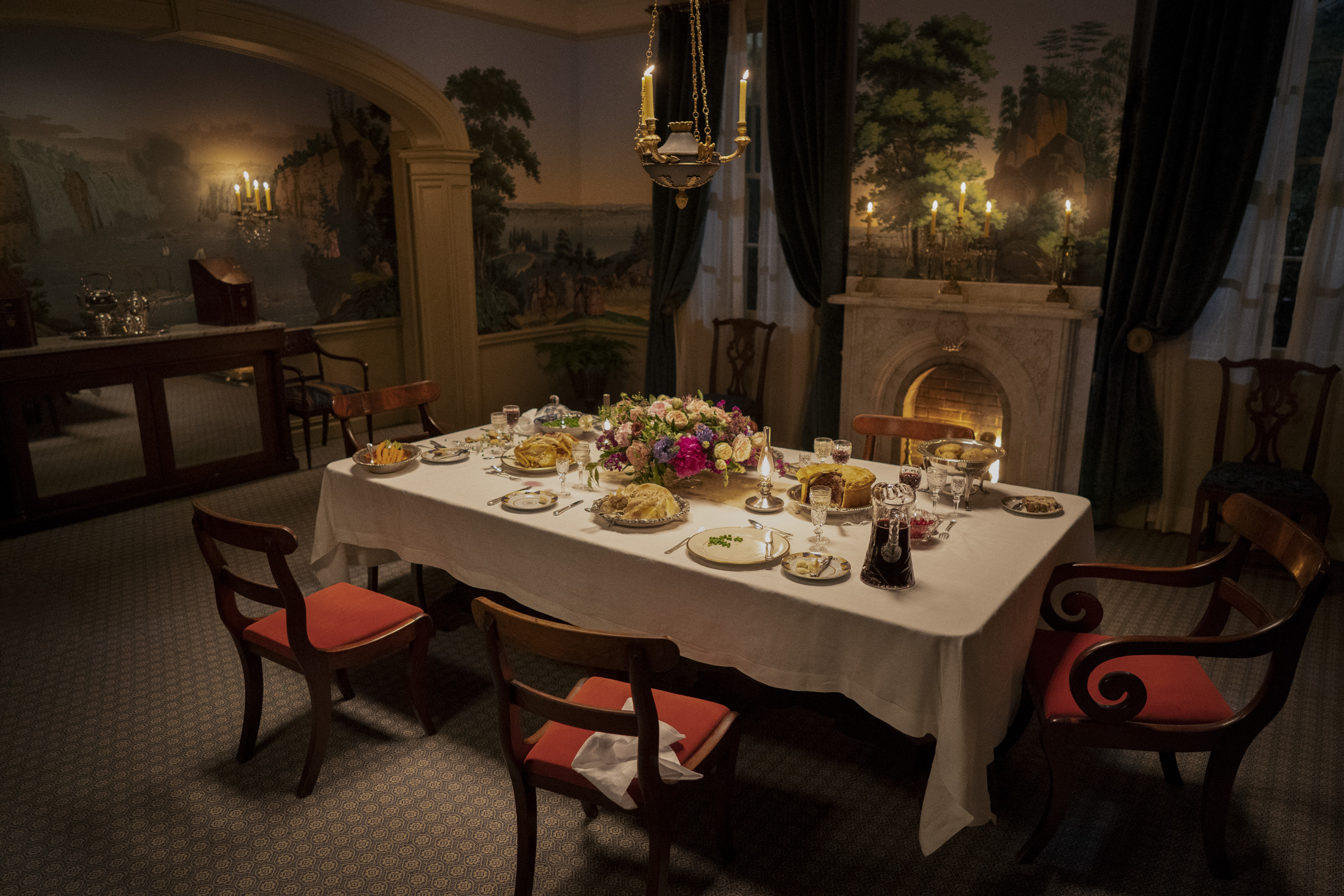
Production design of “Dickinson” by Neil Patel. Courtesy of Apple.
Kirill: If you look back at the time that has passed since you’ve started in this field, do you see many technological changes that have made your job easier? Maybe 3D printing materials, or maybe computer-aided design tools? How much the world of art direction and production design has changed around you?
Neil: I’ve been doing this for quite a while. Between my theater career and my film television career it’s been almost 25 years. I learned to draft and draw by hand, and now I spend most of my time on this computer [laughs]. What I normally would have done with sketching, I now do with 3D modeling and with computer drafting. Some of my research is online, but I’m old enough to have collected a library of art books. I love my books [laughs].
It creeps up on you slowly and you start to accept it. I accept that when I go on a scout, I’m taking pictures on my iPhone or my iPad, and i’m drawing on it. I’m creating documents in the scout bus, and by the time I get up to the office, I have almost a storyboard of what I just scouted. You couldn’t do that before. We were taking notes on notepads and it would take a long time to do storyboards. The thing that I find the most useful is that the technology allows me to communicate to my team and my collaborators so much more easily. Also right now we’re dealing with Covid, communicating over great distance and being separated, not being able to physically be in the same space with people. It’s incredible what you’re able to do.
But I was using these tools even before Covid, and it’s continuing now. 3D printing is a marvelous tool. It lets me build for example a half-inch scale replica of a Chippendale dresser in very little time, and it’s extraordinary how easy it is do it today compared to doing it by hand in the past. Software pre-viz tools are incredible. I can take a director through the set, and make changes on the fly.
Having said that, as much as these tools give you during prep, you can’t ignore the ability to respond to a location in a comfortable, conversational and collaborative way that is not technology based. I hope that does not get lost. When you focus too much on technology, you sometimes lose the life of the thing you’re trying to tell. Some things are accidental, and everybody knows that when they’re making things. As an artist and a collaborator, you always have to be open to things. But the tools nowadays are staggering.
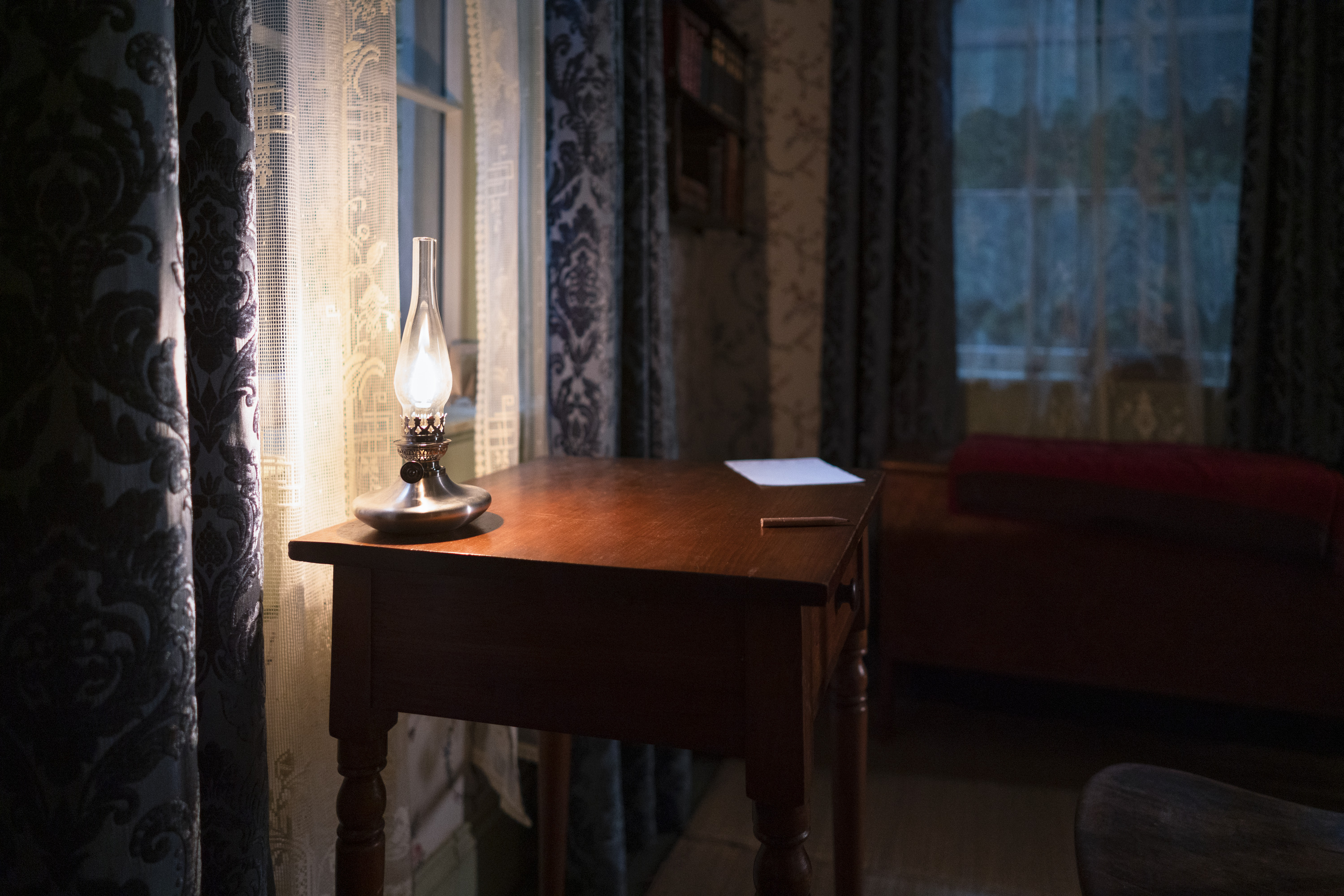
Production design of “Dickinson” by Neil Patel. Courtesy of Apple.
Continue reading »
Continuing the ongoing series of interviews with creative artists working on various aspects of movie and TV productions, it is my pleasure to welcome Oren Soffer. In this interview he talks about the art and craft of cinematography, finding creative solutions within budgetary limitations, keeping track of technological changes in his field, the current production landscape as the Corona-related restrictions are being slowly lifted, and his life-long love of movies. Around these topics and more, Oren dives deep into his work on the just released “A Nightmare Wakes”.
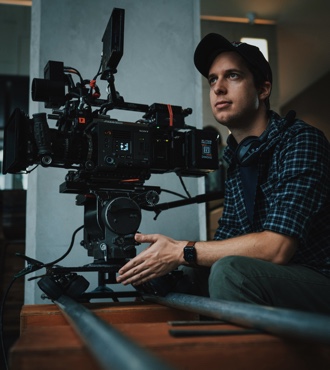 Kirill: Please tell us about yourself and the path that took you to where you are today.
Kirill: Please tell us about yourself and the path that took you to where you are today.
Oren: I grew up on all the classic ’80s and ’90s blockbusters. “Star Wars”, “Indiana Jones”, “Back to the Future”… “Jurassic Park” is the first film I remember seeing in theaters; I was five at the time, and I loved dinosaurs as a kid, so that movie was a big deal for me. I just loved movies since I was a little kid.
As I got a little bit older, I started getting interested in how films were made. Up until a certain age there was a magic to the whole process, and then it started to get demystified when DVDs started coming out with special features and behind the scenes featurettes. At the time they were quite elaborate and detailed, and the big one for me was the “Lord of the Rings” extended edition DVDs, each one with 10 hours of behind the scenes bonus material. They were so detailed, and got into all of the different processes of filmmaking, including cinematography, which I had never really thought about at that time or realized was this separate thing.
As a kid I was also very much into drawing, painting and working in visual arts – starting to get into photography as well. That combination of learning about how films were made, realizing that I wanted to make films and then learning about the role of the cinematographer as the person in charge of crafting and designing the visuals of the film – that was the perfect meeting place of my interests, which were visual art and filmmaking. I was in middle school at the time, and that’s how my interest in cinematography started.
My friends and I started shooting silly little films with home video cameras. We’d be recreating music videos or shooting parodies of movies we loved in our homes and around the neighborhood. It was sort of like that film “Be Kind Rewind” that Michel Gondry directed, where they’re making cheap versions of films.
Skipping ahead, I ended up going to film school at NYU. While there, I focused on cinematography and shot a lot of student films, and I haven’t looked back since. I’ve been a working cinematographer ever since and it’s been great.
Kirill: Did you get to experience the “end tail” of film as the medium?
Oren: Funny enough, we were the last class at NYU that shot on 16mm black-and-white reversal film in our introduction class, as the year after us switched to digital for the first time. We still shot on film and learned on film in the cinematography classes. I got to shoot on 35mm and on Super 16mm.
These days film has made a sort of comeback in the commercial world. There are a lot of commercials and music videos being shot in film now. People are going back to that medium because it has a very specific texture to it that people really like. And obviously a lot of features are still shot on film to this day.
I was quite fortunate to be able to learn on film. We also learned editing on flatbeds. We would shoot 16mm film, get it developed and then physically cut and splice the film like they used to do before computers were around. That was a great way to learn, and I wish more people could learn that way when they study filmmaking, and not just cinematography. It was just such a great way to understand editing and film language, and how to work with limitations. It was a great experience.
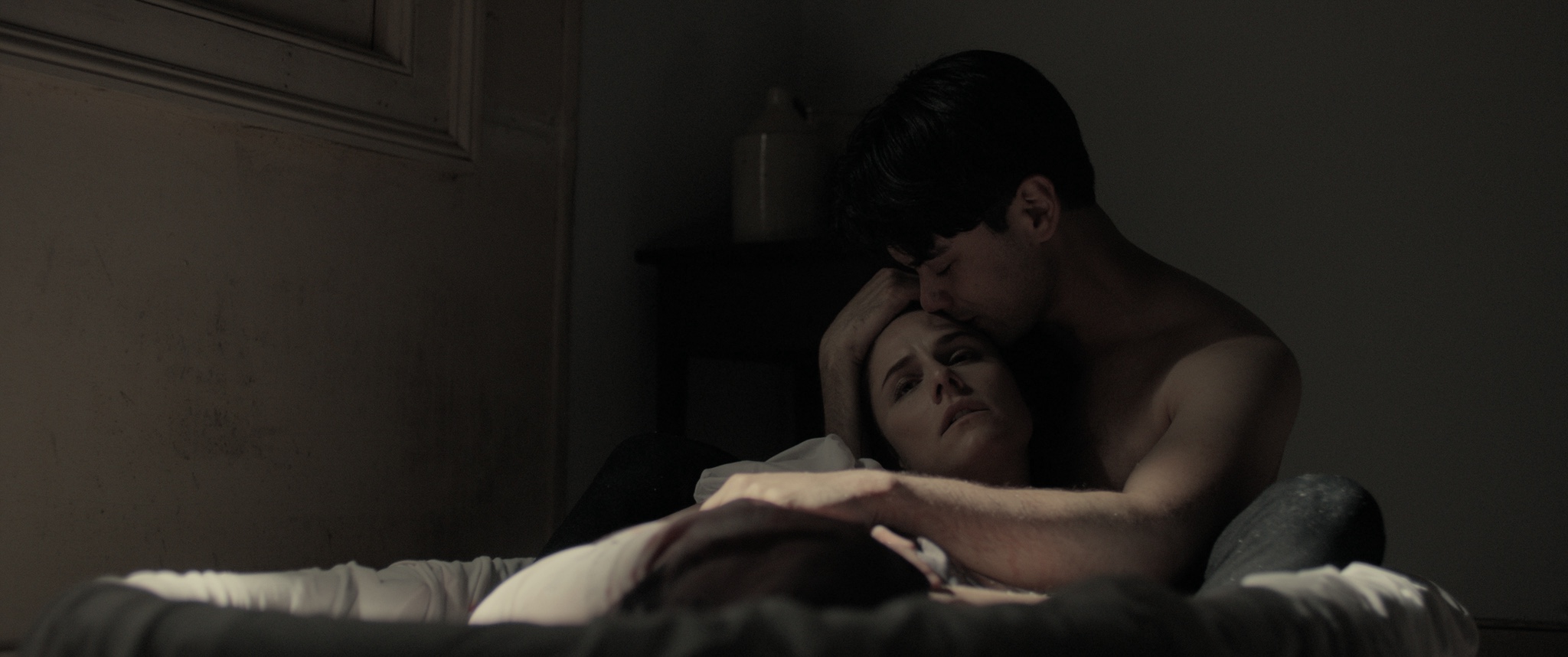
Cinematography of “A Nightmare Wakes” by Oren Soffer, courtesy of Shudder.
Kirill: Cinematographers love to talk about film as the medium, of course. Do you think the viewers at home care as much about it?
Oren: To be honest, most average viewers won’t tell the difference, and that’s something important to keep in mind. Personally, I don’t have a horse in the race in terms of this debate. I don’t think one medium is better than the other.
I personally enjoy shooting on digital. I like having the immediate feedback of being able to see what image you’re composing in real time. With film you have an approximation of it, and then you only really know what you’ve shot when you watch your dailies. I like the immediacy and the responsiveness of digital. It makes me feel like I can be more bold in my lighting and in my cinematography choices. I can go darker and moodier. I can push the image a little bit more.
I think a lot of DPs could use a reminder sometimes that at the end of the day we’re making films for audiences, and what really matters is the storytelling; using film language to tell your story and create a subjective experience with your characters. We get interested in the medium and the technical sides of it. They’re fun for us as cinematographers and as nerds of film and filmmaking, but most audiences don’t notice it [laughs]. I tend to not get bogged down in that.
I like to create an environment that’s simplified and not overly complicated, so that I can focus on film language, shot design, and lighting.
Kirill: If you asked me 20 years ago what the job of a cinematographer is, I’d imagine somebody grabbing a camera, putting it on their shoulder, pointing at the actors and pushing some sort of a button to get it rolling. When people ask you what do you do for a living, how do you convey the actual complexity of it?
Oren: On a basic level, that’s pretty much accurate: a big part of it is deciding where the camera goes. If it’s a low budget project, the cinematographer also ends up operating the camera, and on bigger budget projects or projects with multiple cameras you tend to have other operators come in.
The one aspect that most people aren’t necessarily aware of initially is that the cinematographer also designs, shapes and controls the lighting.
It depends on the circumstance. On “A Nightmare Wakes”, because of our budgetary limitations, the director and I embraced a minimalistic approach from the get-go. From the planning and conception stage we designed this film to lean into limitations, because we knew we didn’t have the budget to pull off any big elaborate things.
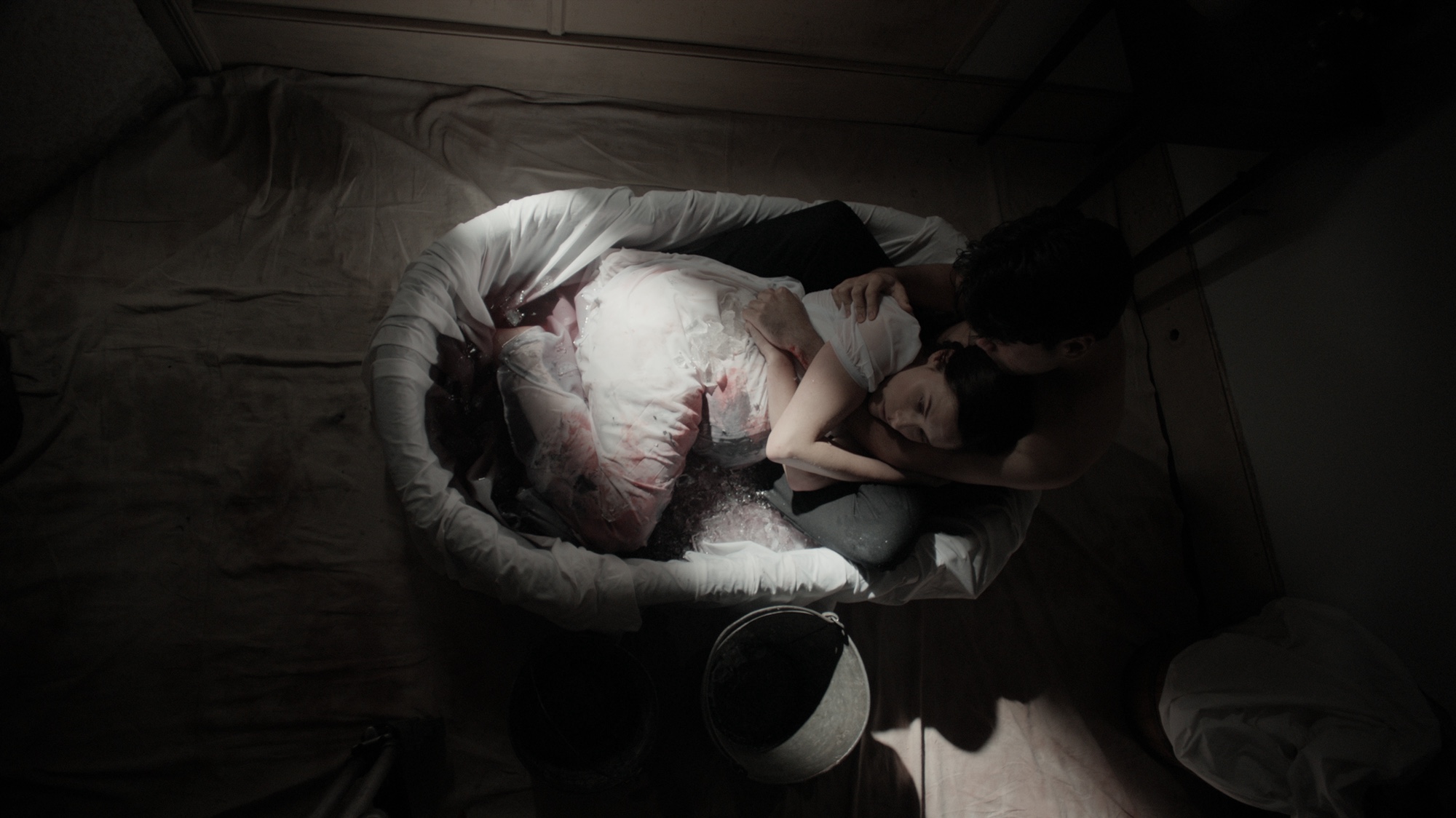
Cinematography of “A Nightmare Wakes” by Oren Soffer, courtesy of Shudder.
Continue reading »
Every once in a while, I come across the quote from George Bernard Shaw’s “Man and Superman”. The one that goes
Those who can, do; those who can’t, teach
I’ve spent more than 20 years being a student. I’ve had my share of dull, uninspiring, lifeless teachers. The ones that would read from the slides, word for word. The ones that would insist on memorizing instead of on explaining. The ones that literally made me fall asleep in the back of the room. They probably saw me back there. I’m not sure they cared much either way.
I’ve had the privilege to come across a few brilliant teachers. The ones that opened up a whole new world with just a sentence or two. I may not remember their names or their faces. But I remember them. I remember those moments. I remember how they changed my life.
Being good at doing X, whatever that X is, is not the same as being able to teach X to somebody who knows nothing about it. Maybe it’s accounting. Maybe it’s rocket science. Maybe it’s programming. Maybe it’s basketball. Maybe it’s design. Whatever it is, the vast majority of those who are good at doing it, are going to be pretty bad teachers.
![]()
![]()
![]()